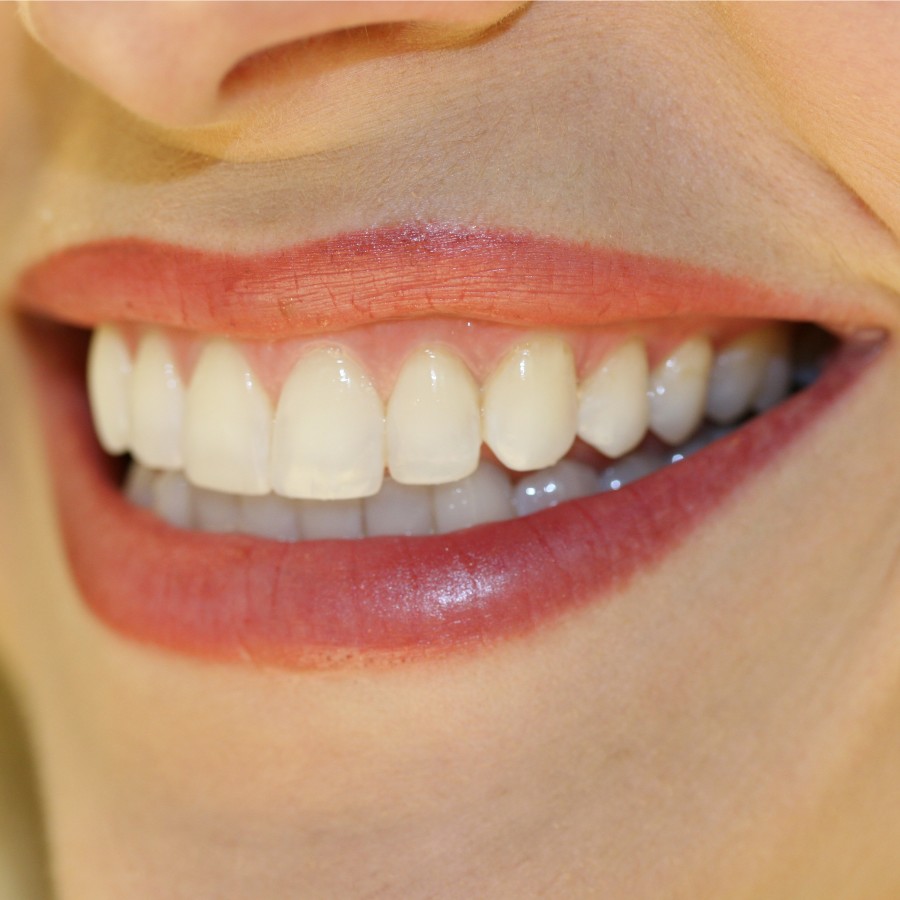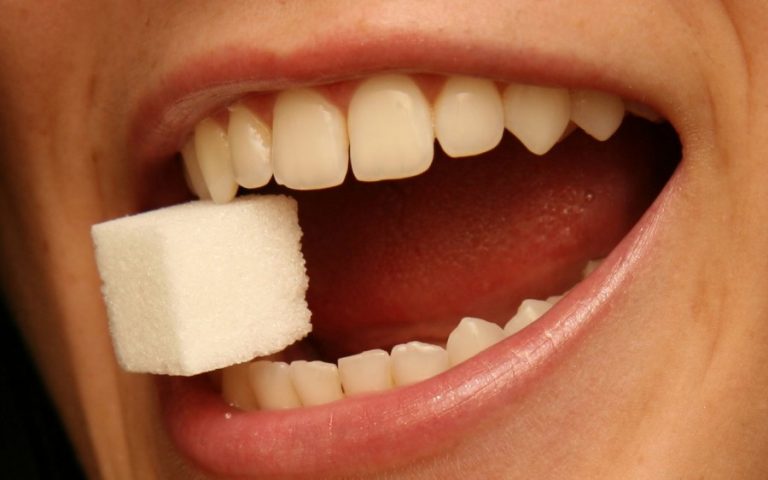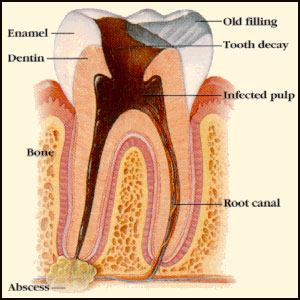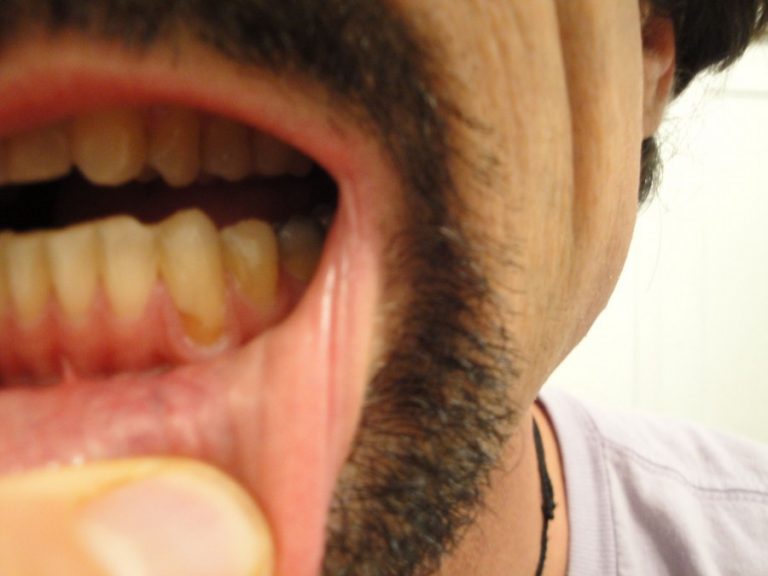All About Biocompatible Dental Materials
I have just found this article today and I have to save it here on my website, it might be useful in the future. I am so familiar with bad materials used in dentistry. I used to have amalgam in my mouth. I think that I had around 10 teeth filled with amalgam. I was nervous all the time, I was shaking uncontrollably, had problems with my stomach, I could not relax, I was always nervous. Always alert, never relaxed. You must be thinking how did I know that the amalgam was causing this?
Well after I read on the internet how bad amalgam is I replaced all my teeth with composite feelings, the composite that my previous “dentist” used was awful. After a few months it started to leak, and it looked like chewing gum. That was so bad. After that I got them replaced for a different composite and that material is really good, it is durable, very hard and of course, it leaks a bit but not so much as previous composite fillings.
So after my amalgam fillings were replaced I immediately felt that nervousness just disappeared. Pufff it was gone. I did not shake uncontrollably anymore, my metal taste was gone and also my stomach pain disappeared.
I am strongly advising you to remove all the amalgam fillings. Amalgam is made is very toxic, the dentist even doesn’t throw away amalgam into the garbage because it is too toxic, and they can put it in our mouths. So funny. What i found out in this article is that zirconium oxide is the most bio-compatible material right now, it is still a metal, but with nonmetal characteristics.
Enjoy reading this article. I have also heard that zirconium is radioactive, but I think that is bs. If anybody has more info about that topic please let me know.
It is important to determine dental material biological compatibility (biocompatibility). Thjere are three different levels of biocompatibility to consider: general, immunological, and bio-energetic.
1. General biocompatibility
On this most basic level, we have to look at how the material reacts generally with human tissue. In other words, how toxic the material is at a cellular level. Does it poison cells? This toxicity tends to be an inherent property of the material, and all people will react to it in a similar manner. Using a toxic material such as mercury or nickel would always be a mistake.
2. Immunological biocompatibility
This level looks at materials from a standpoint of how an individual reacts to the material. The problem is analogous to what happens when someone with an allergy to mushrooms consumes an edible mushroom. The adverse reaction is due to an immunological and/or allergic type response based on teh patient’s biochemical makeup. A test like the Clifford Materials Reactivity Test (www.ccrlab.com) measures how antibodies in the blood react with the material (or, more accurately, its corrosion by-products).
This blood test indicates if the material is suitable form an indiviedual reactivity point of view. When evaluating a Cliffor test, a material that tests NS (not suitable) should not be used. On the other hand, materials that test S (suitable) should, ideally, be further tested. Kinesiologic testing for biocompatibility can also be performed to determine the body’s immunological response to substances.
3. Bio-energetic biocompatibility
For thousands of years Eastern medicine has studied the flow of energy through the human body and applied this to such healing arts as acupuncture. In more recent times, Dr. Reinhard Voll spent 40 years studying and documenting the relationship between teeth and organ systems. Using Electrodermal Screening (EDS) and Applied Kinesiology (AK or Muscle Testing), it can be determined how a material reacts with the body on an energitic level. If energetically incompatible materials are used, interferences are created on the meridians associated with the teeth being restored. according to Eastern medicine, each tooth correlates with and potentially influences different organ systems.
To select a restorative material of the highest levels of compatiblility, start with materials that exhibit low toxicity to cells, then eliminate the ones that elicit an immunological response, and then, to further narrow down the choice, select from the remaining materials using either EDS or AK. Using such a multi-step approach should give you the highest probability of selecting a non-reactive, compatible material. Of course, many patients will skip the testing and simply ask to have a material used that has been found to generally biocompatible. However, in cases where patients are experiencing multiple chemical sensitivity (MCS), various illnesses, or are highly concerened about achieving the highest level of biocompatibility, specific testing as described above is indicated.
Once the final restorative material has been selected, it is important ot understand that other materials are used in order to get a finished product. In the case of a metal restoration, this usually involves only the dental cement used to adhere the crown to the tooth (unless the tooth is so broken down that it requires a build-up, in which case all of the following steps also apply). If the restoration is a ceramic or composite, a number of steps are required to complete the bonding process.
Composite Fillings
These materials consist of tiny glass particles suspended in a resin (plastic) matrix. The size and amount of the glass particles give the composite filling materials different characteristics, such as strength and polishability. Composites are used in areas where the fillings are relatively small and there is plenty of tooth structure for support.
Composite fillings are less durable than amalgam if the filling is large, but comparable in durability if the filling is small to average size. Composite fillings in back teeth are significantly more difficult and time-consuming to place than amalgam fillings, therefore more expensive. Composite materials are most commonly placed directly into the tooth (like amalgam fillings), but can also be prefabricated and bonded into place indirectly (like a crown).
However, they are more natural-looking, require less tooth reduction to place, and are bonded in place for a better seal. Composites are not totally compatible either. Most are made of the petro-chemical bis-phenol, which some research indicates leaches out estrogen-like substances. Some composites are less biocompatible than others because of the amount of iron oxide, aluminum oxide, barium, and other materials in them.
Direct composites can cause hairline cracks in the tooth from the hardening process, whereas indirect composites do not because they are hardened in the lab. Porcelain is more natural-looking than composites, but because it is harder and more brittle, it causes a wearing away of everything it contacts with and can crack instead of flex from stress.
All porcelains contain aluminum oxide. The one exception is unshaded Dicor, which is weaker and not very natural-looking (over a period of 3-4 months, unshaded dicor will pick up the shade of the tooth under it). If metal is not used in a crown or bridge, it is significantly weaker and has an increased risk of breakage during normal function. Gold fillings, porcelain fillings, indirect composite fillings, and crowns require more tooth structure to be trimmed away than for amalgam and direct composites, and take two appointments rather than one. Most “gold” crowns placed today contain from 1% – 40% gold and have nickel in them, which is inappropriate for those with a compromised immune system. Special order higher content gold will obviously cost more due to the cost of gold.
Studies of gallium alloys have reported problems with corrosion, durability, tooth fracture, and tooth sensitivity. More research and development is needed, but for now, it is recommended for use in baby teeth only. Some experts consider all metals, even non-allergenic or non-toxic metals, to be disruptive and therefore believe they should never be used in the body. Since nearly all composites and porcelains contain iron and aluminum oxides, some experts limit their choice of materials to only a few.
Still others think the use of high quality metals like high content gold or titanium is acceptable, but only if one brand and formulation is used for the entire mouth. One must weigh biocompatibility against function and durability. Because of contractual language and statistics, use of titanium, high content gold, and composite for crowns, bridges, or fillings will probably result in lessened insurance benefits, even though the time, cost, and effort in doing them is the same or more as for standard gold alloy and porcelain materials. Cadmium is used for color stabilization, so cadmium-free materials may lose some color over time.
Filling Materials
Amalgam
Amalgam is the most commonly used material for back teeth. It contains approximately 50% mercury and varying amounts of silver (30%), tin, zinc, and copper. It is the least costly and least time-consuming to place. It does not hold its shape over time, corrodes easily, and is expected to last 5-10 years. The controversy is that it contains mercury, a known neurotoxin (poison to the nervous system).
Galloy
Galloy is a brand new material containing silver, tin, copper, indium, and gallium. It is meant to be mercury-free alternative to amalgam. Why is the American Dental Association developing & patenting this substitute for mercury amalgam if mercury amalgam is safe?
Direct Composite
A direct composite is a special plastic material that bonds to tooth structure, is tooth colored, is more easily repairable, and requires less tooth structure to be trimmed away than any other material. It is expected to last 5-7 years, although small to moderate size fillings may last longer. Research has shown that it reinforces the tooth and makes it stronger. Cost and time to perform is about 50-75% more than amalgam. Composites are a petrochemical derivative and, as such, are a possible problem for the environmentally sensitive.
Indirect Composite Inlay/Onlay
This type of restoration is used when ideal fit and durability is desired, which is seldom achieved with a direct composite filling. Cost is approximately 2-3 times that of an amalgam filling and takes two visits.
Porcelain Inlay/Onlay
Dental ceramics (sometimes referred to as dental porcelains) have come a long way! Until a few years ago, these materials were relatively weak (that’s why they required support from a metal substructure) and abrasive (causing wear on the opposing teeth). Today there are many different types of ceramic systems: Feldspathic, Leucite-reinforced, Polymer-reinforced, Zirconium-based–each with unique properties. From rebuilding broken teeth to replacing missing teeth (even in the back of the mouth), there is a ceramic to do the job. However, they are more difficult to use than conventionally cemented (non-bonded) crowns.
Picking the right ceramic for the job, proper tooth preparation, quality laboratory work, and meticulous cementation technique are all needed for a successful tooth restoration. It costs about the same as an indirect composite inlay/onlay and takes two visits. Most ceramic and resin-based materials contain metals in the form of oxides (such as aluminum) or even heavy metals (such as cobalt, barium or cadmium). These are usually added to give the materials strength and improve their appearance. Sometimes they are added to make the restoration show up on x-rays. The number of materials that do not contain any of these products is very limited. However, the advantage of being oxide-free is lost when these are bonded to the tooth using an oxide-containing luting agent.
Gold Inlay/Onlay
Because of gold’s long history, it is the standard against which other materials are judged. This type of restoration is used when maximum strength is desired and appearance is not a factor. Gold is almost never used in its pure form; rather gold is used as an alloy with other metal elements. It costs approximately three to four times more than an amalgam and takes 2 visits. There are many formulations of gold, varying from 1% to 99%. The other metals are added in order to give the gold strength and the ability to bond to porcelain (in the case of porcelain veneer fused to cover a gold crown). The most commonly added metals are palladium, silver, copper, and platinum.
The composition and amount of each metal in the alloy determines whether it is classified as a “high noble,” “noble,” or “base” metal. “Noble” metals are defined as gold, platinum and palladium. The most expensive gold alloys are “high noble” and they are defined as hving at least 60% noble metals and at least 40% gold. An alloy can still be called “noble” if it has at least 25% noble metal content. The cheapest materials fail even that test and are called “base” alloys–they have less than 25% noble metals. It is especially important for patients with metal sensitivities to avoid the base alloys since these usually contain toxic metals such as nickel and chromium;. But even the high noble materials can be incompatible for patients and even toxic; palladium, for example, is toxic.
Titanium Inlay/Onlay
Titanium is used when a gold alloy is not biocompatible; otherwise, the benefits, cost, and time to perform are the same as for a gold alloy, even though it is not a precious metal. It takes two visits.
Dental Material Philosophies
Conventional
Except in rare situations, currently used dental materials are safe in the mouth. The important criteria are how durable, natural looking, inexpensive, and practical they are for the dentist and dental laboratory to use. Concerns therefore are economics and aesthetics. Because some people have a sensitivity to certain substances, the choice of dental materials may have to be limited. A special blood test may be used to determine sensitivity to corrosion by-products of components.
Toxicity
Some dental materials contain toxic substances that, depending on exposure and other factors, may impact total toxic body load. Non-toxic alternatives should be used to decrease exposure to and accumulation of scientifically confirmed environmental toxins. Some dental treatment and materials can be disruptive to the normal flow of energy through the acupuncture meridians. Eastern philosophy believes chronic disruption of energy flow causes dysfunction and resultant health problems on the associated meridian; therefore, the choice of dental materials and treatments is limited.
Electrogalvanism
Dissimilar metals in the mouth, including different formulations of the “same” metal, create microamps of current which could cause oral pain, corrosion of the metal (black mercury amalgam fillings), dry mouth, metallic taste, erythema (red & swollen gums), and possible dysfunction of other organ systems, endocrine glands, etc. on that meridian.
Crown and Bridge Materials
Gold Alloy
A gold alloy is used when maximum strength is desired and appearance is not a factor. There are many formulations of gold, varying from 1% to 99%.
Titanium
Titanium is used when maximum strength is desired, appearance is not a factor, and a gold alloy is not biocompatible. There are different purities of titanium, with grade-1 being the purest. This is used in joint replacement, dental implants, and bone pins. Cost is the same as for gold alloy.
Non-Precious Alloy
Non-precious alloys are used when maximum strength is desired, appearance is not a factor, but cost is most important. Since it does not contain any gold, cost is less. There are two basic formulations, one that contains nickel and one that is nickel-free. The controversial issue is that nickel, beryllium, cobalt, chromium, and palladium may cause immune problems and/or toxicity.
Porcelain
Porcelain is used when appearance and wear resistance is the most important factor. It is much more fragile than metal and may break easily. Porcelain alone is not normally recommended for bridges.
Indirect Composite
Indirect composites are used when appearance is an important factor but when the risk of porcelain fractures and wearing down the other teeth is to be avoided. These are not quite as wear-resistant or esthetic as porcelain but very acceptable for normal situations.
Zirconium Oxide
One of the most difficult areas in dentistry today is the restoration of dental structures with biocompatible materials that are strong enough to withstand the forces of chewing (500-1000lbs pressure on molar teeth). Recent technology from Germany now offers a material that has overcome most of the pitfalls of present day products. Patients now have a choice of a material that is esthetic, strong, pure, biocompatible and capable of being used for single and long span dental bridgework. That material is called Zirconium oxide.
Zirconium oxide has the following superior characteristics that make it the most ideal material available:
- Excellent biological compatibility: absolutely bio-inert.
- Outstanding physical and mechanical qualities:
- Hardness (Vickers) 1200 HV
- Compressive Strength 2000 MPa
- Bending Strength 1000 MPa
- Modulus of Elasticity 210 GPa
- Tensile Strength 7 MPa
- Wear characteristics (Ring on disc) <0.002 mm³/h
- Absolute corrosion resistance: Ringer’s solution 370°C <0.01 mg/m²x24h
- Very small particle size: <0.6 μm
- No glass phase for particle binding
- Extremely high density
- Porosity: 0%
- Purity (Zr/Hf/Y): 99.9%
- Translucence of the framework material makes excellent cosmetic results possible
- Equivalent fit to precision gold castings: edge opening 20-50 μm. Precludes the need to use adhesive cements.
- Zirconium oxide is manufactured and optimized industrially so that the material qualities remain unchanged through the complete production chain.
- Optimal material for crowns: tasteless, radiopaque, no pulp irritation because there is no need to use adhesive cements and minimal invasive preparation by dentist.
Zirconium oxide forms the core of each crown and provides the cross-link that bridges the gap of missing teeth. The precision fit of the Zirconium core is derived from computer guided Swiss lathes that cut the form out of a solid Zirconium oxide block. The cutting instructions are obtained from a laser beam that reads 120 points per millimeter from the anatomy of a model of the prepared teeth. Once formed, new synthetic porcelain (99.9% pure) is baked on to the Zirconium core and then shaped like a tooth. Because of the extreme accuracy of the crown fit, the crowns can be cemented with biocompatible dental luting material. This avoids the use of an invasive procedure of etching the tooth with acid and injuring the pulp or nerve of the tooth. This latter procedure often times results in the pulp dying and necessitating root canal therapy.
Advantages of ET zirconium high performance ceramic compared with other full ceramics
Zirconium oxide ceramic primarily stands out due to its high crack resistance. Crack resistance is the resistance with which the material counteracts the spreading of cracks. If a material is stressed, it usually comes to excessively high tension within a defect area (pores, surface deficiencies, cavities) or it cracks. While with metals under high tension in the area of cracks, plastic deformation appears and the top of the tension can be reduced by rounding the cracks; in ceramics due to missing plastic deformation possibility the cracks continue to grow. The unusual feature of zirconium oxide ceramic in comparison with other ceramics is that at the appearance of a high-tension area a transformation of the crystal structure can take place. This process is also accompanied by a volume expansion. By this volume increase it builds wedges in the crack and therefore it reduces the continuation of the crack. While the critical tensile strength (KIC) e.g. of Dicor, Vita Mark II and Empress is in the area of 1-2.5 Mpam-1/2, zirconium oxide shows values in the range of 10 Mpam-1/2. Even In-Ceram (glass infiltrated Al203 ceramic) and Procera aluminum oxide (pure Al203 ceramic) show values less then 5 Mpam-1/2.
In connection with the tensile strength there also stands the characteristic of bending strengths. While conventional glass ceramics show results of 100-200 Mpa and aluminum oxide ceramics lie in the area of 400-600 Mpa, zirconium oxide reaches a bending strength of over 1000 Mpa.
Because of the high tensile strengths exhibited in test results, it is now possible to fabricate posterior bridges with zirconium oxide. Further decisive advantages of zirconium oxide are its high resistance to corrosion; stability to hydrolysis and its high biocompatibility in comparison with other ceramics makes this material ideal for restorative dentistry.
In medicine, zirconium oxide is being used more and more as the material of choice especially for hip prosthesis. For years there has existed substantial clinical tests and examinations which confirm the high quality of zirconium oxide.
Denture Materials
Dentures are usually made from acrylic, stainless steel, and chromium-cobalt, but can be made of nylon, a gold alloy, or titanium. Most pink-colored acrylics and vinyls contain cadmium, which is considered toxic and/or immune reactive. The alternative is to use cadmium-free pink or clear materials. Metals are used to increase rigidity and increase retention of the prosthesis in the mouth during function. If metals are not used, the opposite is true, which is not desirable from a functional perspective.
Bonding
Since all direct fillings (composites) and most indirect restorations (inlays, onlays, and crowns) being placed today use a process called bonding, it’s good to have a basic knowledge of how this process works. While there are a myriad of variations in this process, here are the basic steps:
Step 1–Prepare the tooth surface using a mild acid solution. This creates a “honeycomb” in the top layer of tooth.
Step 2–Paint a liquid resin-bonding agent on the tooth. It flows and “locks” into the honeycomb created in Step 1 (technically forming a hybrid layer that is part-tooth and part dental-resin). This layer is “cured” (hardened using a photo-chemical reaction) with a visible light source.
Step 3–Place luting cement if an indirect restoration (e.g., crown) is being used. Essentially, this material is a more liquid form of white filling material. It bonds to both the tooth and the pre-fabricated ceramic restoration and fills the gaps between them. The surface of the first layer of cured bonding agent is highly reactive and is easily bonded to with today’s composite filling materials.
Advantages of Bonding
There are a number of advantages to using bonding. Besides allowing the placement of non-metal restorations, less removal of healthy tooth structure is required. The dentist needs to remove only the unhealthy tooth structure and a precisely fitted piece can be bonded into place to replace it. In the case of fillings, bonded restorations have other physical advantages over amalgam. Even the ADA, in its Journal of the American Dental Association (JADA) , recently acknowledged, “Resin-based composites eventually will replace amalgam as a direct restorative material because they possess many characteristics not inherent in amalgam. Some of the more important of these properties are esthetics, micro-mechanical bonding to tooth structure, smaller cavity preparations and better sealing potential.” (JADA, Vol. 132, August 2001, p. 1100).
New Advances
Breakthroughs in the development of dental materials and techniques are occurring on a regular basis. We have yet to find one single material that is compatible for everyone. Debate continues about how to best restore a patient’s mouth to optimal health and no perfect solution has yet presented itself. The best we can do is to to keep an open mind and keep searching for answers. Only by thorough testing can it be determined which is most compatible for any one person.








Hello, thank you for such an insightful article. Do you know where I can find an EDS practitioner to test which composite and bonding agents are most bio-compatible for me? Also, through your years of experience, have you come across a particular composite and bonding agent which is found to be the most bio-energetically compatible in most people?
Truly appreciate the response as I am currently suffering from tinnitus, brain fog & general fatigue right after doing a few fillings. The fillings were for 2 inlays and 1 onlay. The materials used were Diamond Crown Lab, RelyXu-100 cement and 3M Vitrebond. Any help you can give me of what filling replacement is best will be truly appreciated.
I have no idea sorry
All composites have plastic (toxic) and glass applied with resin. Your tongue takes that toxic leaching material directly into your blood stream. Even with biocompatability testing for the lowest safety risk, you are still at risk over time with the toxins accumulating in your bones, brain, and blood. You can get neurocutaneous syndrome. People have committed suicide from these toxic effects causing a full body reaction. Dentists won’t pull these. My advice, let the tooth crack and then a dentist will pull it. Use natural antibiotics by eating garlic to kill bacteria and parasites. Put gauze between teeth with a filling, to keep the tongue away from the toxic materials. You’ll notice a positive change in how you feel. Amalgam fillings are much worse than composites, porcelain has aluminum which is linked to alzeihmers disease. Gold wears away fast. Don’t get a toothe cavity filled if it’s not on the x-ray. They always heal before the next cleaning and you’ll have new cavities in different locations, EVERYTIME.